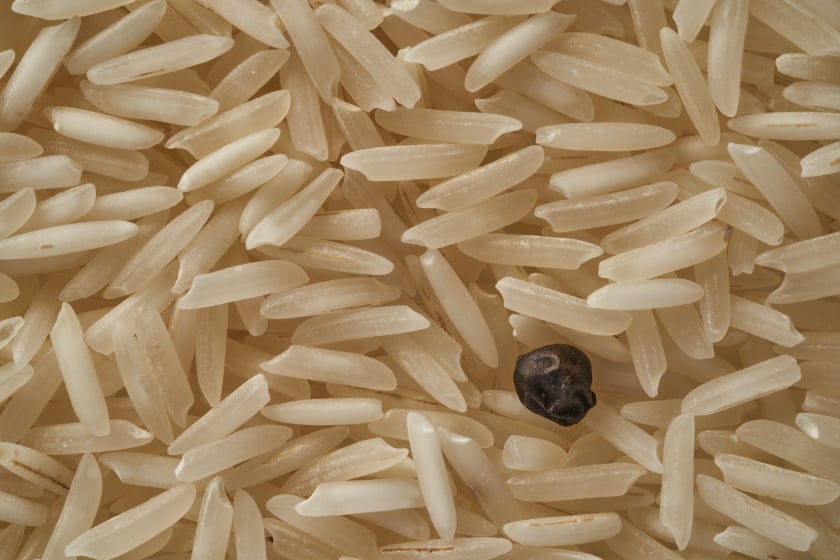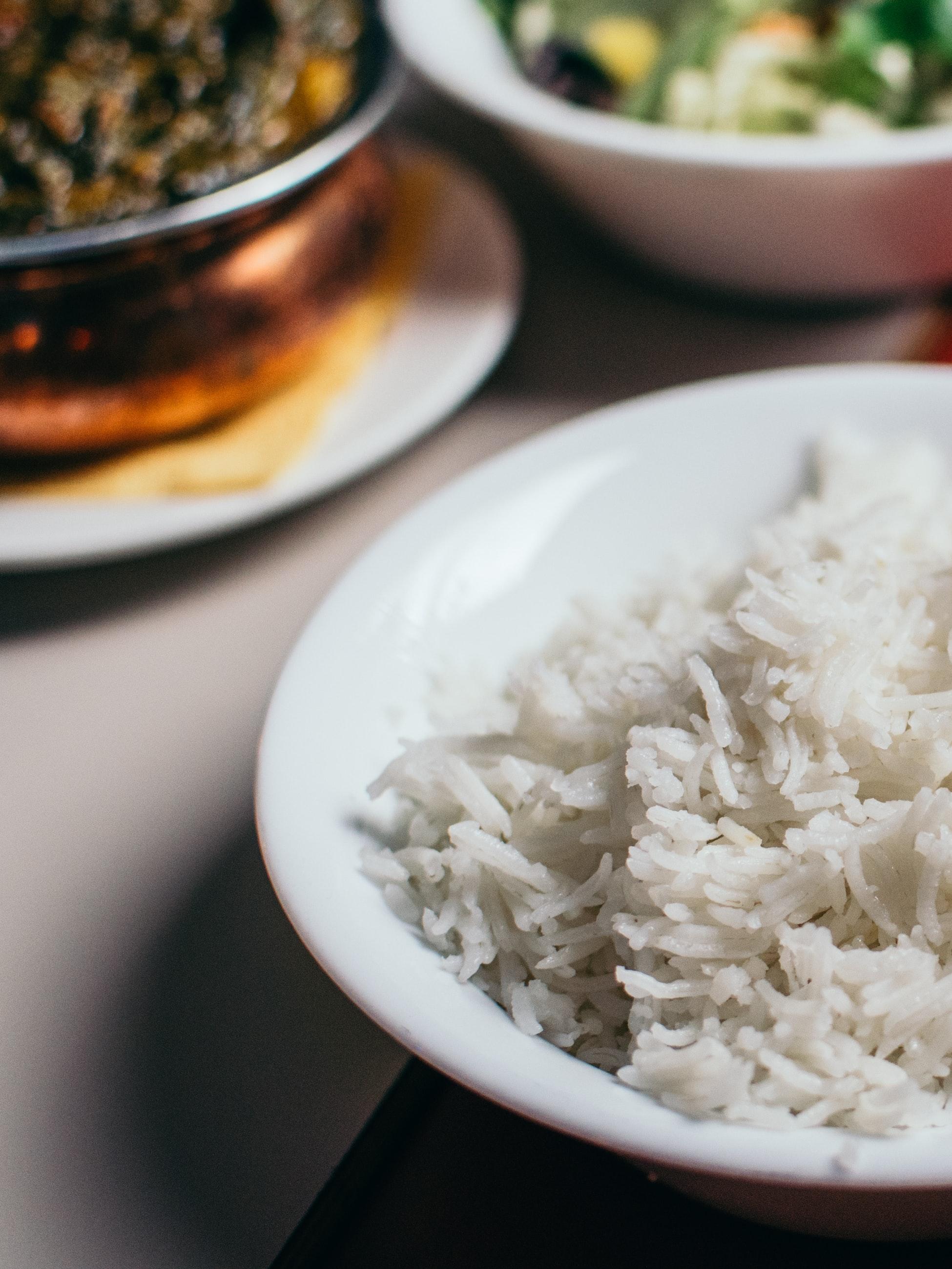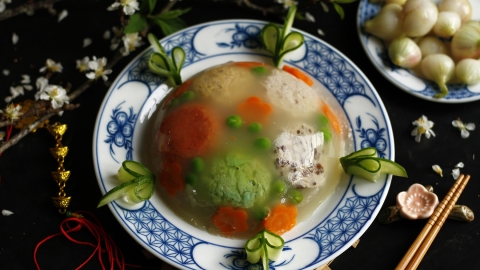Vietnamese home-cooked meals focus on "rice" and emphasize fragrant, soft rice grains.
A home-cooked meal usually consists of a variety of savory, stir-fried, and soup dishes, but all of them are meant to be eaten with rice. Rarely does a home-cooked meal consist of a main dish, with rice being a side dish, unless it is a snack.
It seems that in Vietnamese culture, a meal is to eat to fill the stomach, to satisfy the stomach. "Com neu me ruoc" - an unforgettable saying that our country still passes on to each other. Speaking of com neu, this is the most popular type of rice made from non-glutinous rice. Unlike sticky rice which is very sticky and very fatty, non-glutinous rice has a pleasant aroma and is slightly sweet. Glutinous rice can be cooked as sticky rice, cooked as a snack for a few days, or mixed with non-glutinous rice to cook for a different taste, but almost no one eats sticky rice all year round like non-glutinous rice.
There are many types of rice. There is fragrant rice, Northern fragrant rice, hybrid rice from Thailand, Japanese... all of them. Recently, many people have started to prefer a "healthier" lifestyle with brown rice (which is unhulled rice).

"Mother's rice" - an unforgettable saying that our country still passes on to each other.
When cooking rice, each family's eating habits are different. According to many studies, the further up the mountain or the more rural, people tend to cook drier rice, with more separate grains. Soft rice with a lot of water is often found in bustling urban life.
Dry, sticky rice grains are often eaten with elaborate dishes such as braised fish, sun-dried fish, braised pork, etc. They go well with rice. Soft, plump rice grains are more suitable for quick-cooking dishes such as stir-fries, soups, stews, steamed dishes, etc.
A bowl of fish sauce for dipping
It is hard to find a culture of “common dipping sauce” as natural and full of identity as Vietnam. Even though eating together, usually in other countries, each person will have their own bowl of dipping sauce so that no one dips into anyone else’s bowl. In our country, the bowl of fish sauce placed in the middle of the tray is like a connection for all members sitting down to eat. The bowl of fish sauce is the center for people to focus on and turn towards.
No matter how delicious the food on the table is, many people still have the habit of dipping it in fish sauce and chili to make the "masterpiece" more delicious. The fish sauce must be a carefully brewed fish sauce, with fresh chili, sometimes with lemon, kumquat, ginger, garlic depending on the dish. A bowl of hot rice just scooped from the pot, served with meat and vegetables dipped in fish sauce, bursts with a spicy, pungent flavor.
Fish sauce is a dipping sauce for boiled vegetables, boiled pork belly, soft-boiled eggs, fragrant steamed fish with ginger… A bowl of fish sauce is a spice, a Vietnamese culture, the final stroke of the picture of our home-cooked meals.

The fish sauce bowl is the center for people to focus on and turn towards.
If there is salt, there must be soup, clucking chicken with lemon leaves
While dinner in other cultures is predictable and has specific standards, it is difficult to find this at our dinner table.
You can have dinner in America with a portion of fried chicken, soda and a beef burger, or a plate of potatoes and fried fish (fish and chips) in England or a more sophisticated dinner with mushroom soup, steak, and a fancy wine in France. You can also order a Japanese style rice soup with dishes that almost go together like rice, miso soup, pickled vegetables and a plate of grilled fish or a Korean rice which includes rice, kimchi soup and many side dishes (pan-chan).
That is, you can completely imagine what you will eat today. Or guess what you will eat when you sit down to eat Western, Chinese, Japanese, Indian food… But when you sit down to a meal cooked by your mother, it is very difficult to guess what among the hundreds of thousands of Vietnamese dishes your mother will give us to eat.
It could be a bowl of crab soup with crispy eggplant and prawns fried with lemon leaves, or it could be crispy fried tilapia with fragrant garlic and chili sauce, served with a plate of boiled spinach, and the soup mixed with a few sour star fruit. The ingenuity and talent of a mother to keep the family meals fresh and the dishes delicious is something that each of us, as children, cannot guess before stepping into the kitchen.
No matter how cleverly it is changed, home-cooked meals always maintain a certain order. For example, on the dinner table there must always be a savory dish - the main dish to eat with rice, a soup to neutralize the saltiness of the rice, an extra vegetable dish to add fiber or a shiny stir-fry dish for the man of the house to enjoy with wine.
Not only keeping the tradition on the dinner table, but each dish on it is also cooked according to its own rules. For example, a plate of boiled chicken cannot be without lemon leaves, beef must be accompanied with garlic, or "grunting pig, buy me onions"... have become quality oral recipes that grandmothers pass on to grandchildren, mothers pass on to children.
Fresh meals, full of the cook’s affection and continuously every day, which seem to be associated with creativity, are actually serious meals that follow the limits and elaborate “rules” left by our ancestors. Home-cooked meals can be cooked according to each family’s preferences, but very few people will stray too far from the traditional habits of soup, salty, and stir-fried dishes.
Temporarily closing the sharing about family meals, Travellive hopes that through this article, readers will be reminded of memories of family meals, of familiar dishes that grandmothers and mothers have raised all of us.































